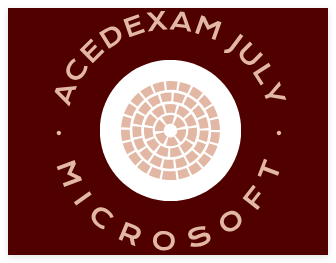Categories
Archives
- July 2024
- June 2024
- May 2024
- March 2024
- January 2024
- December 2023
- October 2023
- September 2023
- August 2023
- July 2023
- May 2023
- April 2023
- January 2023
- December 2022
- October 2022
- September 2022
- July 2022
- June 2022
- April 2022
- March 2022
- December 2021
- November 2021
- September 2021
- July 2021
- May 2021
- March 2021
- January 2021
Category: Business Continuity
Extract, Transform, and Load (ETL) – Core Data Concepts
Extract, Transform, and Load (ETL) ETL pipelines process data in a linear fashion with a different step for each phase. They first collect data from different sources, transform the data to remove dirty data and conform to business rules, and load the processed data into a destination data store. This approach has been used in …
Extract, Transform, and Load (ETL) – Core Data ConceptsRead More
Azure SQL Managed Instance – Relational Databases in Azure
Azure SQL Managed Instance Migrating SQL Server workloads to Azure can provide more benefits than simply offloading hardware management. Organizations can also take advantage of PaaS benefits that remove the overhead of managing a virtual machine, such as the OS and the SQL Server instance from users. However, applications that require instance-scoped features will still …
Azure SQL Managed Instance – Relational Databases in AzureRead More
Load – Core Data Concepts
Load The last phase of an ETL process involves loading the transformed data to a destination data model. This data model can be a data warehouse such as Azure Synapse Analytics or Azure SQL Database, a database such as Azure Cosmos DB that serves highly distributed web applications, or an object store such as ADLS …
Extract, Load, and Transform (ELT) – Core Data Concepts
Extract, Load, and Transform (ELT) ELT workflows differ from ETL workflows solely in where the data transformation takes place. Instead of a separate transformation engine, the destination data store is used to load and transform data. This simplifies the design by removing extraneous components that would typically be used to transform data. Since the transformation …
Extract, Load, and Transform (ELT) – Core Data ConceptsRead More
Load and Transform – Core Data Concepts
Load and Transform The key to any ELT workflow is the destination data store’s ability to process data without needing to store it in-engine. MPP technologies do this by fitting a schema over one or more files that are stored in ADLS or Azure Blob Storage. The destination data store only manages the schema of …
Diagnostic – Core Data Concepts
Diagnostic Diagnostic analytics use historical data to answer questions about why different events have happened. While descriptive analytics use historical data to display past results, diagnostic analytics take this a step further by determining the root cause behind those results. This is the first technique that leverages machine learning to provide insights. Examples of diagnostic …
Table – Core Data Concepts
Table A table is a grid that contains data that is ordered in rows and columns. Tables work well with quantitative comparisons where you are evaluating many values for a single category. Technologies such as Power BI Paginated Reports and SSRS format large tables to fit onto multiple pages make them easier to read. This …
Line Chart – Core Data Concepts
Line Chart Line charts represent how a series of values change over time. Power BI enhances line charts by including a tooltip that provides more granular information for each data point on the x-axis. This is helpful if you are trying to prove a correlation between data points. Tooltips can be displayed by hovering your …
Exam Essentials – Core Data Concepts
Exam Essentials Describe the characteristics of relational data. Relational databases are data storage technologies that organize data into tables that can be linked based on data common to each other. Database tables store data as rows and are organized into a set number of columns. Relationships between tables allow users to easily query data from …
Relational Data Structures – Relational Databases in Azure
Relational Data Structures Relational databases are composed of several different components. Take an OLTP database that powers a retail company’s POS for example. This database probably has a customer table that contains rows for every customer that has made a purchase. The table can include columns for each customer’s first name, last name, phone number, …
Relational Data Structures – Relational Databases in AzureRead More

